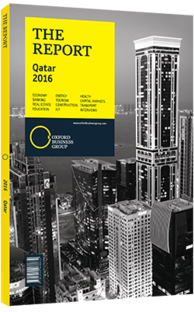James Elwen, Partner and Head of Qatar Office, Pinsent Masons, on changes in project financing and the impact of declining oil prices: Viewpoint

The Qatari economy, together with all of the other GCC countries, has been affected by the recent economic changes, most notably the fall in oil prices coupled with volatility in the stock markets after China devalued its currency. Due to its vast natural gas reserves and emphasis on liquefied natural gas exports, Qatar is one of the best placed in the region to weather the situation. Yet 2016 will be a challenging year for the financing and procurement of new projects, which are essential if the state is to meet its 2022 FIFA World Cup obligations and to achieve the targets set out in Qatar National Vision 2030. The procurement of new projects also plays a central role in one of the key aspects of Qatar’s growth strategy: diversification. Progress in the non-oil and gas sector is critical to expanding the country’s revenue base.
Public projects in Qatar are typically financed by the Qatari government, and indeed this is the preferred approach for each of the GCC member states, apart from Kuwait. However, the impact of the drop in oil prices may serve as a catalyst for implementing an alternative method of financing in the form of public-private partnerships (PPPs).
The PPP model essentially enables private sector investment, thus diminishing the need for governmental capital finance and meeting the funding gap. The model spreads the cost of a project over the lifetime of the asset and avoids an up-front hit to the capital budget. Where it has been implemented successfully, the country benefits from private sector technology, innovation, expertise and improved operational efficiency. Perhaps most importantly, PPP-financed projects incentivise the private sector to deliver projects on time and within budget. The Qatari government had been showing an increasing appetite to enter into PPPs for some time before the impact of the oil price drop was felt. This was largely due to the scale of investment in infrastructure that is planned, the country’s growing population and the desire to carve out a larger role for the private sector. Qatar is not entirely without good examples of other alternative funding arrangements; the build-own-operate-transfer model, for example, was used to implement the Ras Laffan independent water and power project. The state’s utilities sector can serve as an example for the success of this model, with numerous independent power producer projects already established between Qatar Electricity and Water Company and private investors including Engie, Chubu Electric, Sumitomo, Mitsubishi, and so forth. Successful ventures include Qatar Power Company, Mesaieed Power Company, Ras Girtas Power Company and the recently established Umm Al Houl Power Company set up in 2015. There is still significant scope for widening the use of PPPs.
Developing a successful PPP programme is a complex undertaking and involves a number of key steps. While various countries will approach it differently, most agree that a clear and comprehensive national policy, and a legal and regulatory framework for PPPs, is advisable. These provide adequate protection and obligations for all parties involved, including the government, investors and lenders. Once good projects are selected, sound project structuring is needed, including adequate risk allocation, measurable performance indicators and the flexibility to adapt to change. Part of the initial task should be to standardise procurement documentation and procedures and formulate a standard PPP contract form that can be utilised by the various government ministries and departments. In other words, the key to effective PPPs is in the legislation and the contracts. In 2013, a draft PPP law was prepared but did not get approval from the relevant governing bodies. Since then, the economic situation appears to have triggered renewed interest in an all-encompassing PPP regulatory framework, which is being developed.
You have reached the limit of premium articles you can view for free.
Choose from the options below to purchase print or digital editions of our Reports. You can also purchase a website subscription giving you unlimited access to all of our Reports online for 12 months.
If you have already purchased this Report or have a website subscription, please login to continue.

